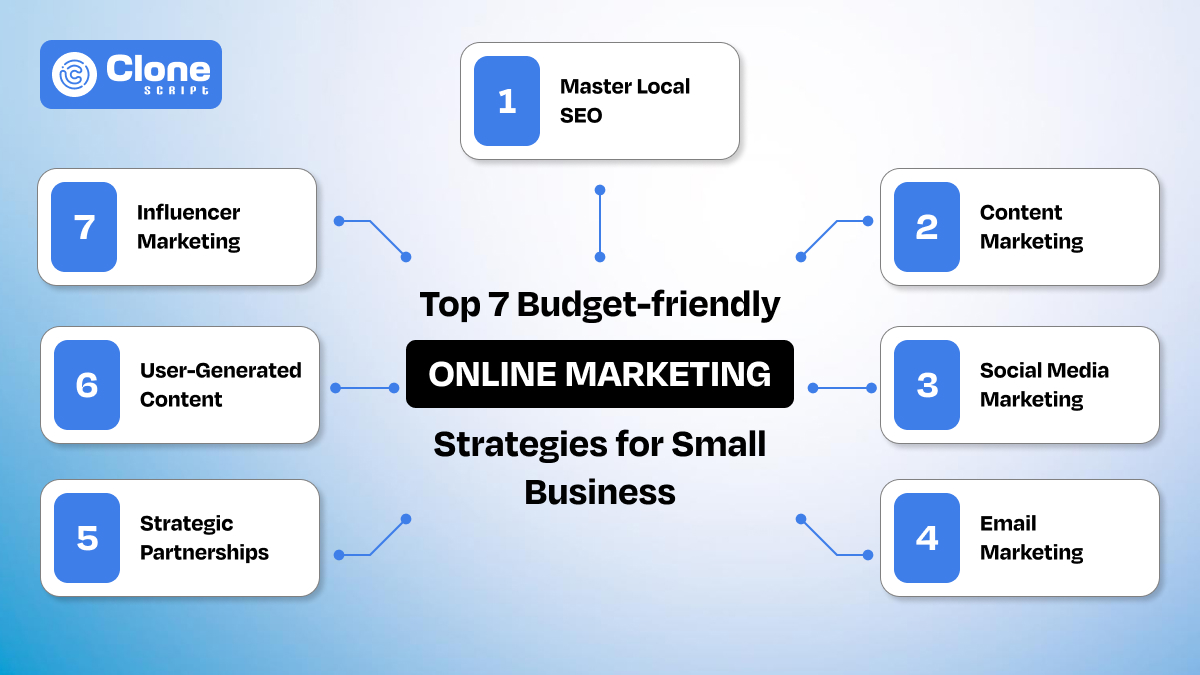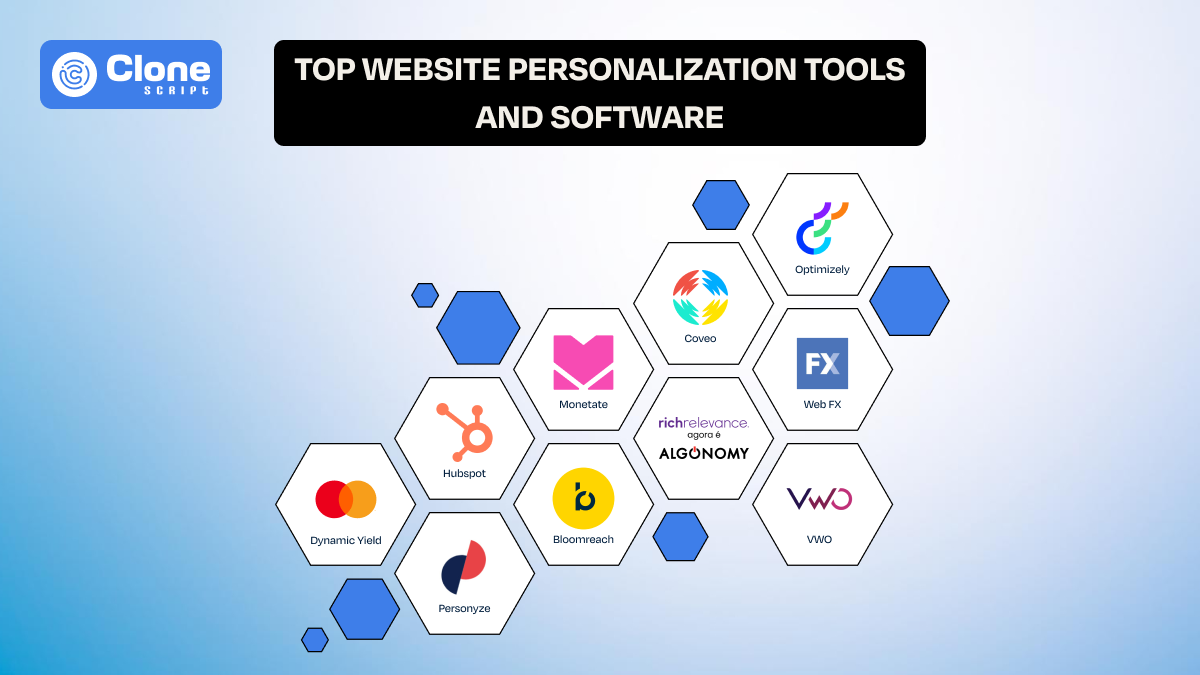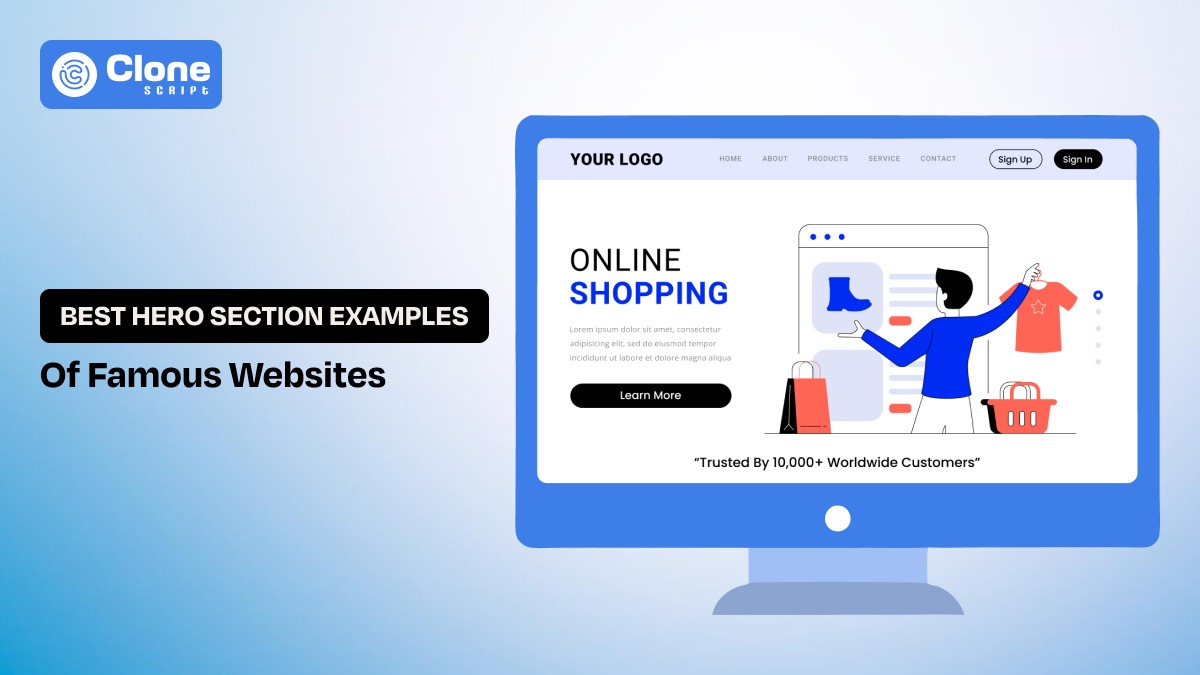Top 7 Online Marketing Strategies for Small Business Owners on Budget
As a small business owner, you pour your heart and soul into building a brand that stands out. Yet, competing with established giants can feel like an uphill battle, especially with limited resources.
Did you know that over 70% of small businesses cite budget limitations as their biggest hurdle in marketing?
Thankfully, with smart, budget-friendly marketing strategies, you can level the playing field and keep your business competitive and relevant.
In this article, we are going to discuss advanced yet affordable marketing tactics designed to help entrepreneurs succeed without breaking the bank.
Strategy No. 1: Master Local SEO and Claim Your Google My Business Profile
Local SEO is an important tool for small businesses, and without an ideal local presence forget to attract potential nearby customers who are ready to interact with the business.

The first step is to claim and optimize your Google My Business (GMB) profile.
Here is the overview of how you can do it.
-
What to Do: Add accurate NAP (Business Name, Address, and Phone Number), high-quality images, and customer reviews to your GMB profile. Regularly update your hours and respond to reviews to build trust.
-
Cost: It’s free of cost. For an advanced local SEO use tools like Moz Local to monitor and optimize the performance efficiently.
-
Why It Works: Customers searching for local services take immediate relevant action such as booking an appointment or purchasing the product. They usually decide based on proximity and reviews, making GMB a powerful resource for visibility.
Let’s move forward to the next online marketing strategy.
Strategy No. 2: Invest in High-Value Content Marketing
Relying only on local SEO is insufficient to grow your startup's online presence. You have to invest your time in creating useful, relevant, helpful, and high-quality content creation.

As you have a small team to manage the operations, it’s better to focus on the best content creation tailored to your target audience builds trust and positions your brand as an authority in your niche.
A flexible and professional content marketing strategy offers excellent ROI for every business.
Here is what you have to consider.
-
What to Create: Content marketing is beyond just writing and publishing a blog article. It covers product tutorials, case studies, infographics, or podcast guides that solve customer pain points.
-
Example: A small pet grooming business can create how-to videos on grooming techniques and share them on Instagram and YouTube. Tools like Canva (for infographics) and Loom (for video creation) make this process affordable and effective.
-
Cost-Efficient Tools: There are plenty of tools available (free+premium) for content creation such as Canva for infographics, WordPress for blogs, Loom for video recording, Adobe for video generation, and Zencastr for podcast creation.
After understanding content marketing and best practices with the right tools, it’s time to explore another strategy.
Strategy No. 3: Leverage Social Media as a Free Marketing Tool
Nowadays, social media has emerged as an alternative to search engines. People like to interact directly with the active business on social media platforms like Instagram, Facebook, Pinterest, Reddit, LinkedIn, X (formerly Twitter), and TikTok.

For cost-effective online business marketing, social media platforms are the best choices ever, especially as of now where most of the users have accounts on these platforms.
Take a look at these statistics of social media platform users.
-
Facebook: The community-based platform has 3.06 billion monthly active users (MAUs) around the world.
-
YouTube: A video streaming medium and the second most used app after Google secures 2.70 billion MAUs.
-
WhatsApp: Online messaging web app owned by Meta Inc. successfully retains 2.40 billion MAUs.
-
Instagram: With 2.35 billion MAUs this is one of the most popular social media platforms in Gen Zs for advanced features.
-
TikTok: Video creating and sharing application famous for short-length interesting 1.67 billion.
-
X (formerly Twitter) = Another hot social media platform for real-time updates with 600 million MAUs.
-
Pinterest = With 518 million MAUs, this visual content-sharing platform is still popular.
-
Reddit = A totally community-driven platform with monthly 430 million active users.
-
LinkedIn = Has 310 million users and is best for business-to-business networking and connecting with professionals.
To attract a relevant target audience from here, set up a business social media account. Then create the right content strategy. This validates brand awareness efforts and increases visibility without spending a fortune.
Here is the overview to know about social media marketing for your business with relevant examples.
-
Smart approach: Focus on video content, such as Instagram Reels or TikTok clips that showcase your products or services. Don’t forget to go with meme post trends as it is based on popular characters remain funny for your users and create a unified brand image.
-
Example: A small bakery based in Watsonville, California, USA posts time-lapse videos of cake decorations to attract local followers and expand its social media reach.
-
Budget Tip: Use free social media post scheduling tools like Buffer, Planable, Later, HootSuite, and Zohosocial, to post consistently on social media platforms.
Strategy No. 4: Utilize Email Marketing for Personalized Engagement
Email marketing is another important strategy to implement for growing your startup’s user base. According to a 2023 report by Campaign Monitor, email marketing has an ROI of $44 for every $1 spent, making it one of the most cost-effective channels.

There’s no doubt social media helps to attract new audiences and make brand awareness efforts better. However, retaining them with your business is incomplete without electronic mail marketing.
But the question is still: How to get users' emails authentically with professionalism and relevant guidelines compliance?
The answer is to focus on interesting content generation on the website through e-books, free product offerings, organizing webinars, and newsletter sign-ups.
Once you get a sufficient number of emails, then segment the list according to recipient age, interests, locality, and budget. This will help you to create and run email marketing campaigns and deliver tailored messages that resonate with specific customer groups.
Best ways to start email marketing for your startup:
-
Start with small: Use free or low-cost email platforms like Mailchimp to create targeted campaigns. Invest in premium email marketing templates that look interesting and responsive.
-
Create an email campaign: Conduct a seasonal sale announcement or create personalized birthday discount emails for loyal customers.
Strategy No. 5: Build Strategic Partnerships for Mutual Growth
Do you still want to cut off the marketing costs of business?

If yes, then it’s best to identify businesses in your niche and collaborate with them. It can significantly extend your reach without increasing your budget. Collaborative promotions or bundled offerings help to attract more buyers to both parties.
Compared to previously discussed marketing strategies, this technique will look realistic and ideal for better brand recognition.
Here is the overview of what you have to know about while building a partnership with another brand:
-
How to partner: Arrange a meeting on Google Meet or one-to-one with the business and discuss your startup issue for not getting a relevant local audience. Prepare a plan an
-
Example: If you have a fitness studio and looking to attract health-conscious people, team up with a local nutritionist to offer combined discounts.
-
Key benefits: Key advantages include shared audiences, reduced marketing costs, and increased credibility.
-
Cost: Compared to other marketing strategies it remains minimal, often involving time rather than money.
Keep note: Do not try to reach direct competitors, until you solely prefer B2B operations.
Strategy No. 6: Use the Power of User-Generated Content
The core purpose of marketing is to promote unique and useful offerings to customers.

But think as a customer on which basis you trust the new brand to consider for purchase.
You need trust signals, right? This includes reviews or testimonials, photos, and use case videos of relevant products shared by other consumers on social media platforms.
So for your new business, you have to put effort and encouraging your customers to create content that promotes your brand.
Take a look at the easiest and smarter ideas for increasing user-generated content.
-
Incentive idea: Offer discounts or small rewards in exchange for customer testimonials or photos featuring your product.
-
Example: Online boutique store offering a discount for customers who post selfies wearing their purchased outfits on Instagram and tagging your business account with #beststyle, #boutiqueshopping, #localboutique, #fancyclothes.
-
Cost: Low to none. Organic word-of-mouth marketing saves additional costs to spend on digital advertising on Meta platforms and Google.
Strategy No. 7: Experiment with Influencer Marketing
For a quick online reach for your business, an Influencer marketing strategy can be the perfect choice. Yet it requires minimal investment but long-term advantages by adopting this trending marketing approach never to be ignored.

You don’t just have to contact influencers having 1 million followers and a broader community.
Start with micro-influencers (those with 10,000–50,000 followers), especially local ones who can offer cost-effective promotional opportunities. These influencers usually have highly engaged audiences and charge less than celebrity-level accounts.
Considerations for applying this marketing strategy effectively for your small business:
-
How to choose influencers: Look for local influencers or niche bloggers who align with your brand values. See their reviews on different products and relevancy for fact-checking. Consider the number of followers on social media platforms.
-
Example: A small skincare business partnering with a beauty blogger to review their products and inspire customers to make desired actions (e.g., purchase, sign-up, etc).
-
Budget tip: Offering free products or services in exchange for a review. Try to convince influencers to giveaway offers after a certain amount of reach and leads your business gets (e.g., new followers on Instagram and direct purchase from YouTube video recommend link).
Despite these seven affordable online marketing strategies for small businesses, there are certain kinds of strategies still helpful:
-
Digital advertising: For brand exposure, drive relevant users to your online business through Google Ads, Meta Ads, X Ads (for Twitter), Pinterest Ads, and LinkedIn Ads. Manage the ad campaigns under a dedicated platform and start with placing low-cost ads (without affecting the marketing budget).
-
Community involvement: If possible, sponsor a local education institution or donate products to charity events. Community involvement builds goodwill and provides free exposure through word-of-mouth.
Ultimately, which marketing strategies will work depends on your business goals. For example, if your sole goal is to make your brand awareness better, social media marketing (e.g. Instagram Reels and TikTok videos) is a good choice. Another side like to generate more leads and sales and invest time for improving online presence through Local SEO.
Conclusion
As an entrepreneur, it’s never going to be easy to establish brand authority in the market for new business. But with the right approach and useful, cost-effective online marketing strategies, it can be fulfilled without any issues. Most of the users are moving online, and not having a strong presence in the virtual world counts as missed opportunities, such as new sign-ups and sales.
Ready to transform your marketing? Contact us we will help you to achieve anything you expect, whether it’s increasing your local business presence or searching for social media management. We have all the solutions.
 BTC - Bitcoin
BTC - Bitcoin
 USDTERC20 - USDT ERC20
USDTERC20 - USDT ERC20
 ETH - Ethereum
ETH - Ethereum
 BNB - Binance
BNB - Binance
 BCH - Bitcoin Cash
BCH - Bitcoin Cash
 DOGE - Dogecoin
DOGE - Dogecoin
 TRX - TRON
TRX - TRON
 USDTTRC20 - USD TRC20
USDTTRC20 - USD TRC20
 LTC - LiteCoin
LTC - LiteCoin







